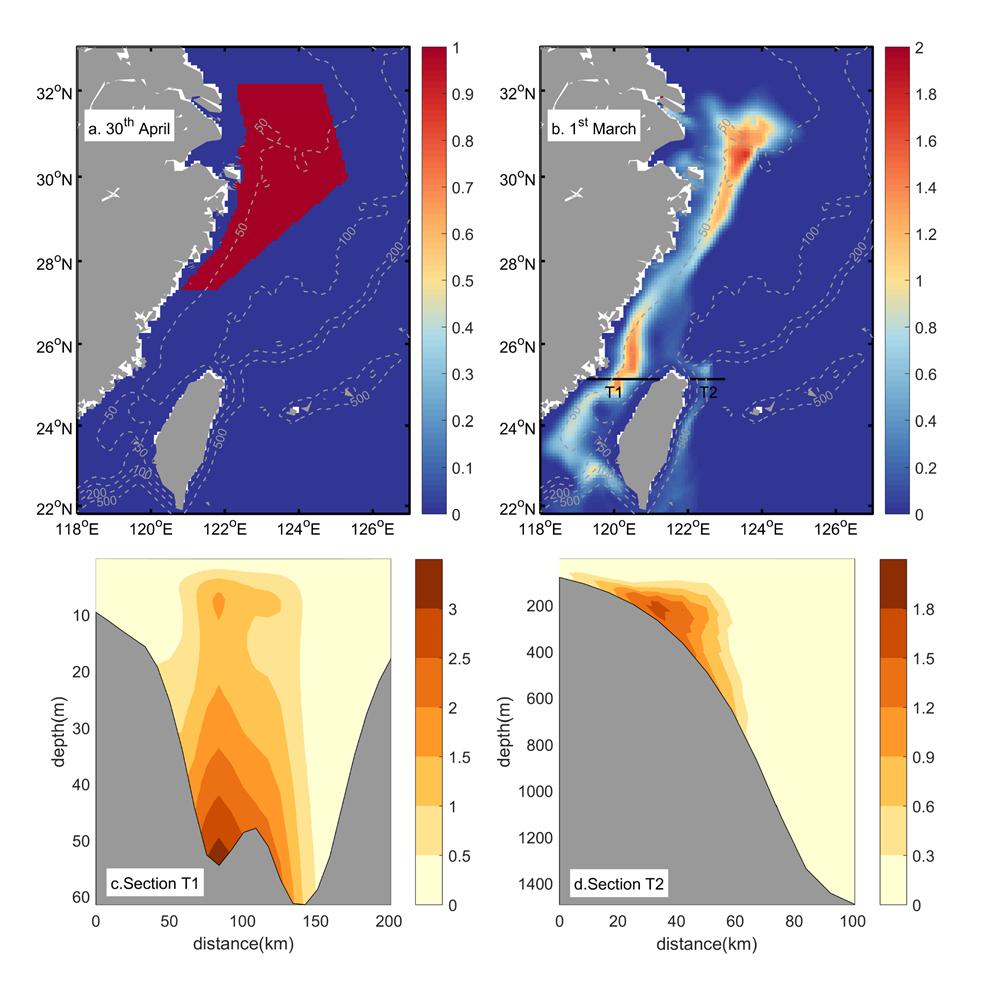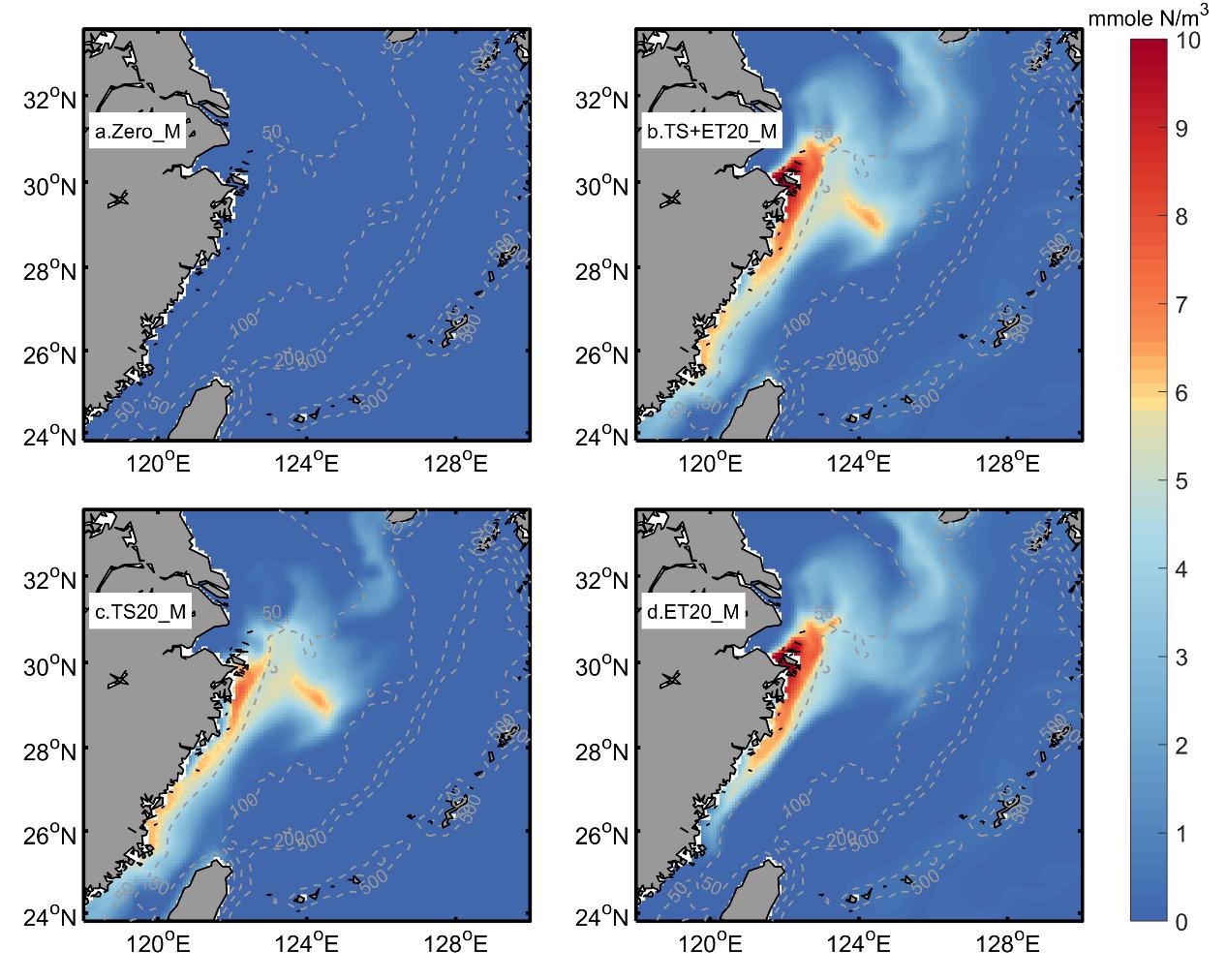The Changjiang Estuary and adjacent sea area suffer from frequent harmful algal blooms, exerting a great impact on the ecological environment and fishery resources. About 60% of harmful algal blooms are caused by dinoflagellates. However, the population source of some dinoflagellates in this area remains unknown.
The research team led by physical oceanographer Prof. YIN Baoshu cooperated with Red-tide expert Prof. YU Rencheng at the Institute of Oceanology, Chinese Academy of Sciences (IOCAS), deployed an adjoint model and a coupled physical-biological model to explore the possible nonlocal dinoflagellate population sources to the Changjiang Estuary and adjacent seas.
The study was recently published in JGR-biogeosciences.
Researchers revealed that dinoflagellate populations in the Taiwan Strait and eastern Taiwan are nonlocal cell sources of dinoflagellate blooms in the study area in May. The appearance time of the initial population in two non-local source areas affects the dinoflagellate biomass and bloom range in the study area.
The dinoflagellates biomass in the study area decreased significantly with the decrease of the initial population density in the Taiwan Strait, while it still maintained a high value when the initial population density decreased in eastern Taiwan. In other words, even a small initial population of dinoflagellate in eastern Taiwan could trigger a large-scale bloom in the Changjiang Estuary and adjacent seas.
This new discovery provides not only a new strategy to the prediction of algal blooms in the Changjiang Estuary and adjacent sea area, but also target domains for finding nonlocal dinoflagellate cysts.
The above research was supported by the National Natural Science Foundation of China and the Strategic Priority Research Program of the Chinese Academy of Sciences.

Fig. 1 Dynamic sensitive source region diagnosed by the adjoint model

Fig. 2 Monthly averaged surface biomass of dinoflagellates (mg N/m3) in May in the (a) Zero_M, (b) TS+ET20_M, (c) TS20_M, and (d) ET20_M experiments
Xu, L., Yang, D.*, Yu, R., Feng, X., Gao, G., Cui, X., Bai, T., Yin, B*. (2021). Nonlocal population sources triggering dinoflagellate blooms in the Changjiang Estuary and adjacent seas: A modeling study. Journal of Geophysical Research: Biogeosciences, 126, e2021JG006424. https://doi.org/10.1029/2021JG006424
XU Lingjing
Institute of Oceanology
E-mail: lingjingxu@qdio.ac.cn
(Editor: ZHANG Yiyi)

